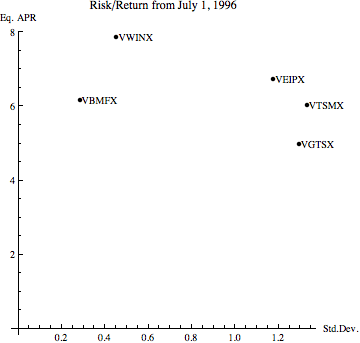chinaco
Give me a museum and I'll fill it. (Picasso) Give me a forum ...
- Joined
- Feb 14, 2007
- Messages
- 5,072
I am in a similar position to Midpack. Planning how to manage assets through my distribution phase.
I have had a general plan about how to approach it and mitigate risks (both investment and life event).
An alternate approach I have been mulling over would involve a significant chunk of assets (50% of total assets which would be held in IRAs) in the Wellesley Fund which is an actively managed balanced fund (40/60) that is generally investing in LCV stocks and Int Term Bonds.
I have had a general plan about how to approach it and mitigate risks (both investment and life event).
An alternate approach I have been mulling over would involve a significant chunk of assets (50% of total assets which would be held in IRAs) in the Wellesley Fund which is an actively managed balanced fund (40/60) that is generally investing in LCV stocks and Int Term Bonds.
- Has anyone done a historical study of the returns and how the fund has held up (in terms of investment)? The fund seems to throw off a nice dividend and Cap Gain yearly.
- The fund managers have changed recently. Does VG use a committee approach to making investment decisions (as opposed to 1 guy in a cube... which would be a little disconcerting)?


